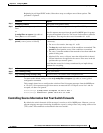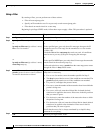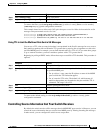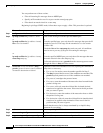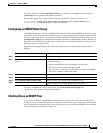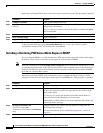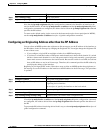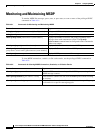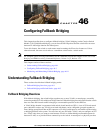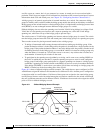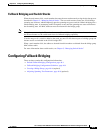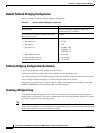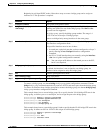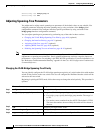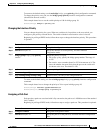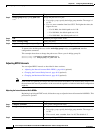
CHAPTER
46-1
Cisco Catalyst Switch Module 3110 and 3012 for IBM BladeCenter Software Configuration Guide
OL-12189-01
46
Configuring Fallback Bridging
This chapter describes how to configure fallback bridging (VLAN bridging) on the Catalyst Switch
Module 3110. With fallback bridging, you can forward non-IP packets that the switch does not route
between VLAN bridge domains and routed ports.
To use this feature, the switch or stack master must be running the IP services feature set. Unless
otherwise noted, the term switch refers to a standalone switch and to a switch stack.
Note For complete syntax and usage information for the commands used in this chapter, see the Cisco IOS
Bridging and IBM Networking Command Reference, Volume 1 of 2, Release 12.2.
This chapter consists of these sections:
• Understanding Fallback Bridging, page 46-1
• Configuring Fallback Bridging, page 46-3
• Monitoring and Maintaining Fallback Bridging, page 46-11
Understanding Fallback Bridging
These sections describe how fallback bridging works:
• Fallback Bridging Overview, page 46-1
• Fallback Bridging and Switch Stacks, page 46-3
Fallback Bridging Overview
With fallback bridging, the switch bridges together two or more VLANs or routed ports, essentially
connecting multiple VLANs within one bridge domain. Fallback bridging forwards traffic that the switch
does not route and forwards traffic belonging to a nonroutable protocol such as DECnet.
A VLAN bridge domain is represented with switch virtual interfaces (SVIs). A set of SVIs and routed
ports (which do not have any VLANs associated with them) can be configured (grouped together) to
form a bridge group. Recall that an SVI represents a VLAN of switch ports as one interface to the routing
or bridging function in the system. You associate only one SVI with a VLAN, and you configure an SVI
for a VLAN only when you want to route between VLANs, to fallback-bridge nonroutable protocols
between VLANs, or to provide IP host connectivity to the switch. A routed port is a physical port that



